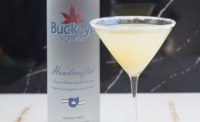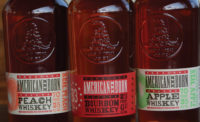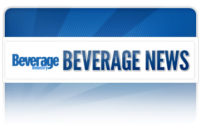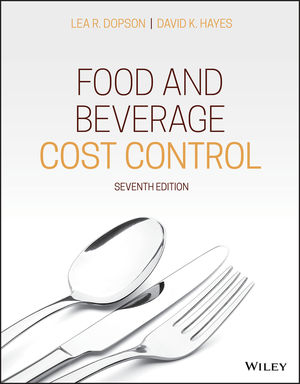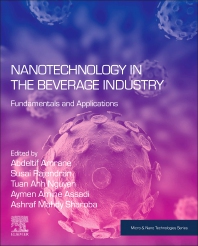Distilled Spirits Council reports market share increase for spirits
Revenues up for tequila/mezal, American whiskies

The distilled spirits sector remained resilient in 2022 despite a challenging external environment, achieving record market share and sales driven by continued consumer interest in premium spirits and the ongoing recovery of the hospitality industry, the Distilled Spirits Council of the United States (DISCUS) reported at its annual economic briefing for media and analysts.
DISCUS President and CEO Chris Swonger reported that spirits supplier sales in the United States were up 5.1% in 2022 to a record total of $37.6 billion, while volumes rose 4.8% to 305 million 9-liter cases.
In 2022, spirits gained market share of the total U.S. beverage alcohol market for the 13th straight year with supplier sales rising 0.8 share points to 42.1%. Each point represents $890 million in supplier revenue. This represents the first time spirits supplier revenues have surpassed beer, which holds a 41.9% market share.
“Despite the tough economy, consumers continued to enjoy premium spirits and fine cocktails in 2022,” Swonger stated. “Cocktail culture continues to thrive in the United States supporting jobs in the distilling, hospitality and agriculture sectors.”
Swonger highlighted the market share gains stating: “Year after year, the spirits sector has slowly gained market share by staying focused on our consumers, delivering innovative, high-end products, and advocating to level the playing field for spirits, beer and wine products in the marketplace and legislative arena. As DISCUS celebrates its 50th anniversary, spirits taking the lead in revenue share represents an historic milestone for all leaders in the spirits industry, past and present, to toast.”
Swonger noted that the solid growth in the spirits sector has helped buoy the entire hospitality industry from small distilleries, to restaurants, bars and hotels.
Sales volumes at on-premise establishments, which represent about 20% of the U.S. market, are rebounding but remain 5% lower than 2019 levels following nationwide restaurant and bar closures and restrictions. Off-premise sales volumes, which saw sharp gains in 2020, remained steady in 2021 and 2022.
Presenting an overview of the spirits sales trends, Christine LoCascio, DISCUS chief of public policy and strategy, reported that while the premiumization trend slowed overall in 2022 it still remained strong due to the growth in the tequila/mezcal and American whiskey categories.
LoCascio attributed the slower growth rate in 2022 to the softening of the economy, as well as the return to an average spirits growth rate following the pandemic-boost of consumers stocking up at the beginning of the pandemic and purchasing super-premium spirits for at-home bartending.
“More than 60% of the spirits sector’s total revenue was from sales of high-end and super-premium spirits, mainly led by tequila and American whiskey,” LoCascio stated. “While many consumers are feeling the pinch from inflation and reduced disposable income, they are still willing to purchase that special bottle of spirits choosing to sip a little luxury and drink better, not more.”
LoCascio noted that spirits ready-to-drink (RTD) products continue to be hugely popular among adult alcohol consumers looking for convenient quality cocktails made with premium ingredients and real spirits. Spirits RTDs remain a small but growing portion of the overall RTD market representing 13% of the total RTD market volume in 2022, compared with 8% in 2021.
The Top 5 spirits categories by revenue:
- Vodka sales flat totaling $7.2 billion
- Tequila/mezcal sales up 17.2% or $886 million totaling $6 billion
- American whiskey sales up 10.5% or $483 million totaling $5.1 billion
- Brandy and Cognac sales down 12.3% or ($428 million) totaling $3.1 billion
- Cordials sales up 2.6% or $73 million totaling $2.9 billion
Top 5 fastest growing spirits categories by revenue:
- Premixed cocktails including spirits RTDs up 35.8% or $588 million to $2.2 billion
- Tequila/mezcal up 17.2% or $886 million to $6.0 billion
- American whiskey up 10.5% or $483 million to $5.1 billion
- Irish whiskey up 6.9% or $91 million to $1.4 billion
- Blended whiskey up 6.8% or $60 million to $940 million
Additionally, the U.S. Bureau of Labor and Statistics reported 2022 hospitality industry employment was down by 750,000 jobs compared to pre-pandemic levels.
“The recovery of hospitality businesses is trending in the right direction, but we urge legislators at the federal and state levels to seek ways to support these businesses as they continue to recover, not saddle them with unnecessary market restrictions or higher taxes,” Swonger statement. “Measures to modernize the marketplace by providing spirits consumers with greater access and more choices will continue to spur economic growth.”
During a briefing, Michael Mariano, head of economic development for Tourism Economics, an Oxford Economics Co., presented new research on the economic impacts of spirits tourism at the state level. The research, which was commissioned by DISCUS, analyzed pre-pandemic 2019 data for distilleries in New York, California and Texas and measured the direct and indirect impacts arising from distillery visitors’ spending both on-site at distilleries and at off-site establishments surrounding distilleries. The research found the total economic impact of distillery tourism generated $715.2 million in Texas; $546.4 million in New York; and $417.8 million in California.
“Our research found that distilleries have become a huge draw for non-local visitors,” said Mariano. “While we only analyzed data in three states, this phenomenal growth in distilleries is happening across the country attracting tourists, supporting surrounding businesses and bolstering state and local economies.”
Looking for a reprint of this article?
From high-res PDFs to custom plaques, order your copy today!



